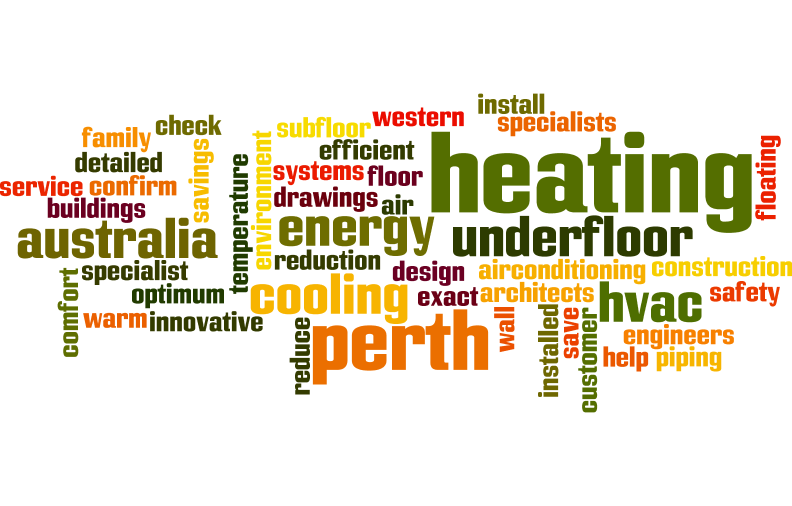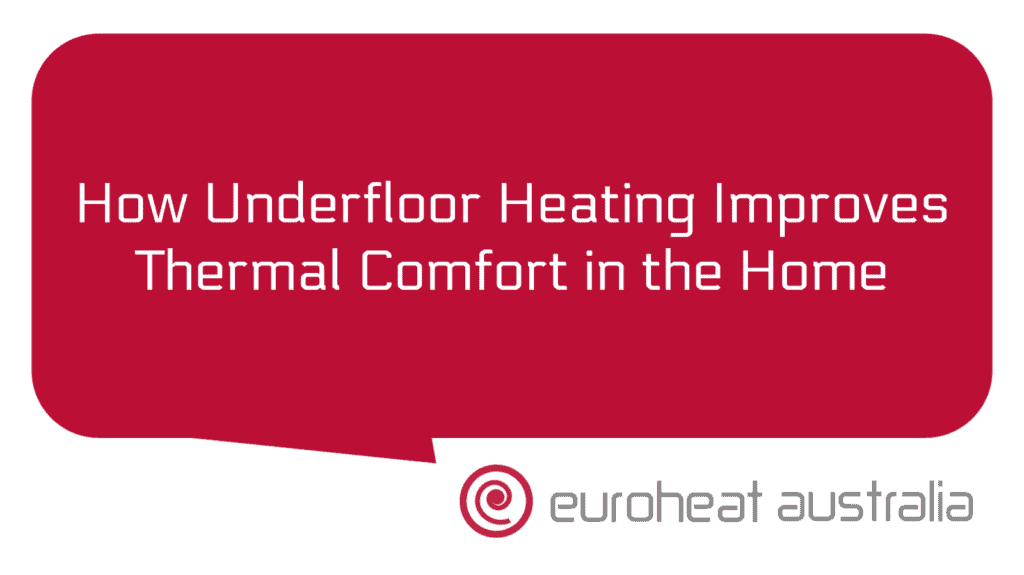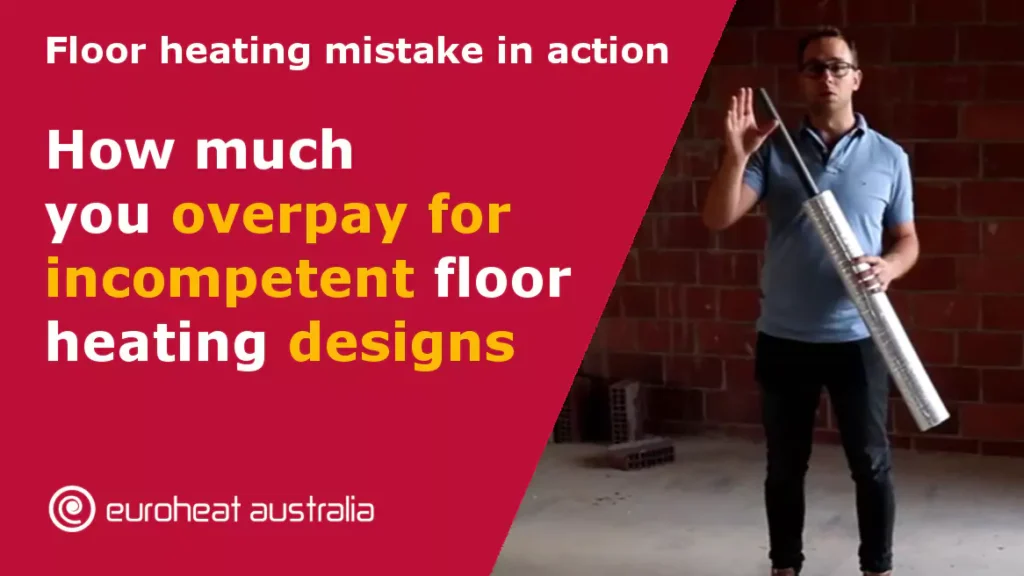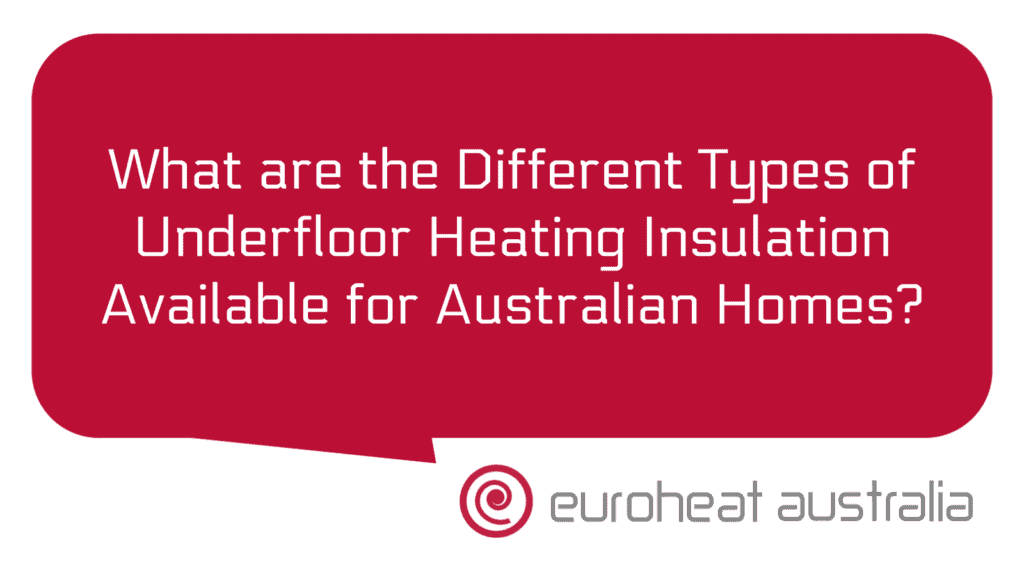When people think about floor heating, they often focus on pipes, heat pumps, and thermostats—but insulation is just as important.
Why? Because without proper insulation, up to 80% of your heat can be lost into the ground. That means:
❌ Higher energy bills – You’ll need more energy to keep your home warm.
❌ Slower heat-up times – Your system will take longer to warm up.
❌ Reduced heating performance – Some rooms may never feel properly warm.
If you want a highly efficient, low-cost heating system, insulation is non-negotiable. Let’s break down why it matters, the different types of insulation available, and how to make sure your floor heating system performs at its best.
Why Insulation is Critical for Floor Heating
Floor heating works by radiating warmth from the floor into the room. But without insulation, a large percentage of that heat escapes downwards into the concrete slab and ground below, rather than rising into your home.
This means your system:
🚨 Needs to run longer to achieve the same level of warmth.
🚨 Uses more energy, increasing running costs.
🚨 Has uneven heating, with some areas feeling colder than others.
✅ With proper insulation, your home heats up faster, stays warm longer, and costs up to 50% less to run.
The Three Types of Insulation Needed for Floor Heating
To maximize efficiency, you need insulation in three key areas:
1. Under-Slab Insulation – Stops Heat Loss into the Ground
🚨 Biggest mistake homeowners make: Not installing insulation under the slab.
Many builders skip this step to save costs, but without it, a huge portion of your heat disappears into the soil instead of warming your home.
✅ Best solution:
✔ XPS (Extruded Polystyrene) board – Rigid, moisture-resistant, and high-performance.
✔ EPS (Expanded Polystyrene) board – Slightly cheaper but still effective.
✔ At least 50mm thick for best performance.
🔥 Why it matters: With under-slab insulation, your system needs far less energy to heat your home, reducing running costs dramatically.
2. Edge Insulation – Prevents Heat Escaping Through the Slab Perimeter
Even if you insulate under the slab, heat can still escape through the edges—especially near windows, doors, and walls that touch the slab.
✅ Best solution:
✔ Edge insulation strips installed around the perimeter of the slab.
✔ Ensures heat stays inside the home, rather than leaking into external walls.
🔥 Why it matters: Edge insulation improves efficiency by up to 25% and prevents rooms near external walls from feeling colder.
3. Floor Covering & Surface Materials – Maximizing Heat Transfer
The final insulation factor is what’s sitting on top of your heated floor. Some flooring materials trap heat, while others allow it to transfer efficiently into your home.
✅ Best flooring choices for maximum heating efficiency:
✔ Tiles and polished concrete – Best heat transfer, fast warm-up times.
✔ Engineered timber – Works well if kept thin (12–15mm max).
✔ Vinyl and laminate – Good performance, but check for compatibility with underfloor heating.
🚨 Worst choices:
❌ Thick carpets – Acts as an insulator, preventing heat from rising effectively.
❌ Solid hardwood over 20mm thick – Can expand and contract with temperature changes.
🔥 Why it matters: Choosing the right flooring ensures your heating system delivers maximum warmth efficiently.
How Much Can Proper Insulation Save You?
Let’s compare a home with proper insulation vs. a home without insulation to see the impact on energy costs.
| Home Type | Running Cost per Day | Monthly Cost | Annual Cost |
|---|---|---|---|
| Floor heating WITH insulation | $1 – $2 | $30 – $60 | $400 – $700 |
| Floor heating WITHOUT insulation | $3 – $6 | $90 – $180 | $1,000 – $2,000 |
🚨 The difference? Up to $1,500 per year in wasted energy.
Over 10 years, that’s $10,000 – $15,000 extra spent on heating—just because the home wasn’t insulated properly from the start.
Common Mistakes (and How to Avoid Them)
🚫 Mistake #1: Not Installing Insulation Under the Slab
✅ Solution: Ensure your builder includes XPS or EPS insulation before the slab is poured.
🚫 Mistake #2: Skipping Edge Insulation
✅ Solution: Install perimeter insulation to prevent heat loss through walls and foundation edges.
🚫 Mistake #3: Using the Wrong Flooring Material
✅ Solution: Choose tiles, concrete, or engineered timber for maximum efficiency.
🚫 Mistake #4: Choosing the Cheapest Quote Without Checking Insulation
✅ Solution: Make sure your floor heating quote specifies insulation materials and thickness—don’t assume it’s included.
Final Thoughts – Insulation is the Key to Efficient Floor Heating
Floor heating is one of the most comfortable and cost-effective heating options available, but only if installed properly. Without insulation, you’ll pay far more to run your system than necessary.
💡 What You Should Do Before Installing Floor Heating:
✔ Confirm with your builder that insulation will be installed under the slab.
✔ Ask your heating installer about edge insulation for maximum efficiency.
✔ Choose flooring materials that work well with underfloor heating.
✔ Get a quote from a specialist who understands heat loss and efficiency.
At Euroheat Australia, we design floor heating systems for maximum performance and energy savings. We include proper insulation in every system we install—so you get the best heating experience, without high running costs.
📞 Want expert advice on floor heating insulation? Contact us today for a consultation and custom heating design!





